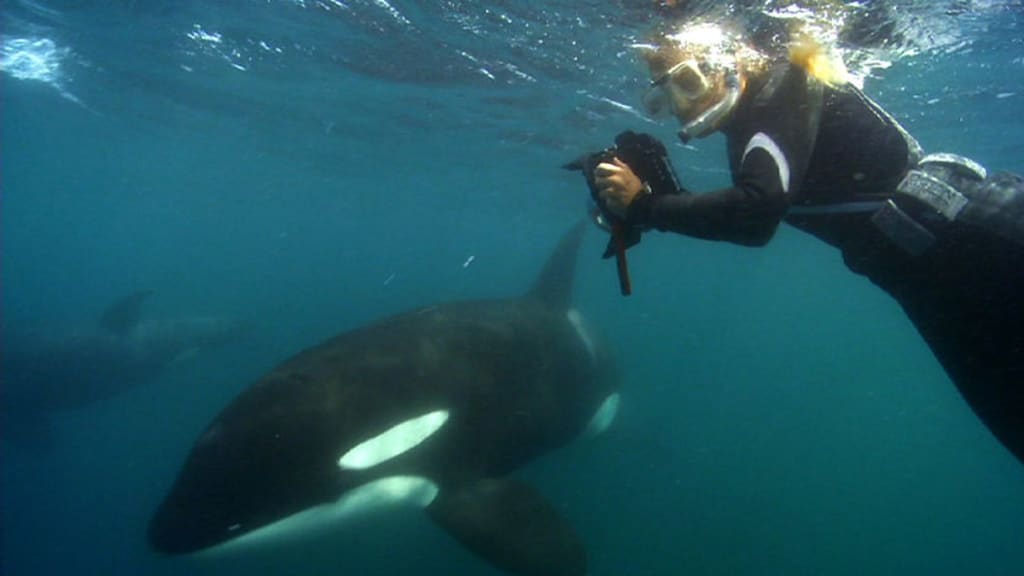Ingrid Visser: Wait, There’s More and A Letter to Ingrid’s Fans
Following an article I have posted that criticized the ethical practices of a New Zealand-based whale researcher, I have decided to do a follow- up in light of both some new information along with a little note to some of her devoted followers.

On October 3, 2019, I posted an article that criticized the ethical practices of Dr. Ingrid Visser, a New Zealand-born whale researcher who is known for her work on wild orca populations in the Southern Hemisphere. The article primarily focused on certain PR moves, and ethical practices that have raised eyebrows within the marine mammal community, and why she at least, needed to be held accountable. Once it got published online, I received a lot of feedback on it, which most of it was pretty good. However, some people, many of whom, were all supporters of Visser and her work, were not so happy about the article’s criticism of Visser, and decided to go onto my Instagram to defend her. So, in response to remarks like “she’s talented,” “at least she works with wild orcas,” along with some brand new information I have since uncovered about her questionable ethics, I took it upon myself to write this follow up along with a little letter to Visser’s supporters.
Visser Running Orca Swim Excursions?
Right after my article went viral, I received a message from a friend on Facebook who has been investigating Ingrid Visser’s research practices for several years now and it turned out that she was doing a lot more than being just a “guest host” for a dive tour company as originally reported, she was actually running them as well. During an investigation that writer Brad Bergman did back in 2015 when he heard about Visser hosting an orca excursion in Norway for a winter 2016 season, email exchanges between him and members of the Waterproof Expeditions Dive company revealed that Visser was in fact, a full-time guide who often took public groups out on dive and snorkel excursions with wild orcas off the coast of Norway.
When Dr.Gary Stafford, who is the current president of the International Marine Animal Trainer’s Association learned about Visser’s involvement with the dive company, he was completely shocked to hear that someone who claims to be a scientific advocate for troubled wild orca populations would condone, practice, or even gain some sort of benefit from a commercial enterprise that involves the harassment of a wild orca population. Then again, this is part of the anti-zoo community’s double-standard philosophy of “do as we say, not do as we do,” which is very hypocritical in so many ways.
Bob’s Death Now Raises More Eyebrows
When I wrote about how Dr. Visser handled the rescue and rehabilitation of an orca calf in her care, I mainly focused on how poorly handled Bob’s situation was and how her lack of experience in animal care may have killed him in the first place. However, I did not go into additional details about how the whole rehabilitation process was troubling from the start.
In one observation, it was revealed that Visser and her staff did not use any masks, nor gloves to protect against germs that are known to cause viruses and bacterial infections. For example, at a number of marine mammal rehabilitation facilities, if animals are able to swim on their own, then, that is when you do not allow people to get in the water with them. At that time, people would be able to enter the water to either feed the animals, or provide them medical care. They also should not be allowed on the edge of the pool either, since contact between people and sick, wild marine mammals can become stressful at times, and may reduce the chance of that animal ever making a full recovery.
What made it even more disturbing is the fact that Visser stated that she had Bob placed in a pool that lacked any filtration system in an undisclosed location. Yet, in all the published videos and images of Bob’s failed rehabilitation, you can see Visser showing this animal off to dozens of people who are all around the small pool taking pictures with cameras and phones with some even coughing, sneezing, laughing, and talking in the background. Believe it or not, this was all happening just a meter away from this sick orca who was prone to viruses and infections that are known to be deadly.
When Bob died just after a few days of being under Visser’s care, instead of having his remains be brought in for a necropsy to determine how he died, he was immediately buried. Please, keep in mind that this is not the first time that animals who have died under the watch of animal rights extremists have disappeared suddenly right after death. In the past, it has been reported that Ric O’Barry had prevented necropsies of animals that have died under his care. If this is the case, then, we may never really know how Bob died under Visser’s care.
False Claims about SeaWorld’s Whales
In a video that Visser made with John Hargrove for PETA’s anti-zoo campaigns, she made a series of false claims about the health of SeaWorld San Diego’s killer whale family with the national media being sold into such claims. For example, Visser and Hargrove confused a fully weaned orca named Makani, who was three at the time of the video’s release with Amaya, the then 10-month-old nursing calf. The video showed Makani and his late mother Kasatka, who was also Amaya’s maternal grandmother and around the time of the video’s publication, Makani was already beginning to eat about 65 pounds of fish a day.
The whale that was often being identified by the video was often seen as a pair with Kasatka. Makani bumping into his mother can easily be regarded as a common form of bonding behavior that orcas often display when interacting with one another and there was defiantly no bruising involved. It should also be noted that the resting behavior that was seen in Visser’s video is a natural behavior that can often be seen out in a wild setting. In the wild, orcas rest as much as 10-21 percent of the time.
This just shows you that even though Visser is an “expert” on orcas, she, as with all marine mammal researchers, still has so much to learn about these amazing mammals whether if it is in the wild, or in a well-managed zoological facility. Only a few researchers have ever witnessed the full life cycle of an orca from birth, all the way to adulthood.
A letter to all of Ingrid’s Fans
To those who support Ingrid and don’t believe she can be criticized for her research methods, I just want to say is this: Ingrid Visser is not a god, nor is she this “talented genius” that you all try to make her look like when you were insisting that I should not criticize her. She is an ordinary person with so many flaws that could have put, not only her own life at risk but also, the lives of the whales she claims to care about. Her views are hypocritical and need to be called into question, but I did not write that piece to ruin her name and reputation, I just want her to be held accountable for her questionable ethics when it comes to how she handles research with wild orcas.
This is especially if these methods could potentially put wild whales at risk if her interactions with them result in the animals getting used to boats and it comes to the point where they could either get injured or even die coming into contact with propellers because of these interactions. The criticism I had on her is about her changing the ways she performs research, especially if she wants to really be known as the “expert” that she often passes herself off as. Without constructive criticism, how can Visser improve the way she does research, or take stands on certain issues without putting herself in problematic situations?
Also, Visser being “talented” has nothing to do with her credibility as an expert on killer whales, especially killer whales in human care. From the whole situation from 2016, it was pretty clear that Dr.Visser had no real expertise in animal care in a zoological setting and multiple videos and photos really did show that all the way. It also has nothing to do with the fact that she often visited various facilities that house orcas to take photos and videos to promote an agenda with many biased claims. Those actions often resulted in her getting banned from these facilities because of rules that prevented people from using photos and videos of their animals for commercial purposes without the facility’s permission, which has resulted in donated money that should have been used to expand conservation efforts for killer whales and other marine wildlife in her native New Zealand.
Like I have said before, while I do respect Visser and her work on New Zealand’s wild orca population, I do wish she was a lot more cautious than extreme when it comes to the way she handles research efforts, and not involve any radical extremists groups that will only do more harm to her career than any good.
About the Creator
Jenna Deedy
Zoo and Aquarium Professional, Educator, Cosplayer, Writer and B.A. in Psychology whose got a lot to share when it comes to animals, zoos, aquariums, conservation, and more.
Instagram: @jennacostadeedy






Comments
There are no comments for this story
Be the first to respond and start the conversation.